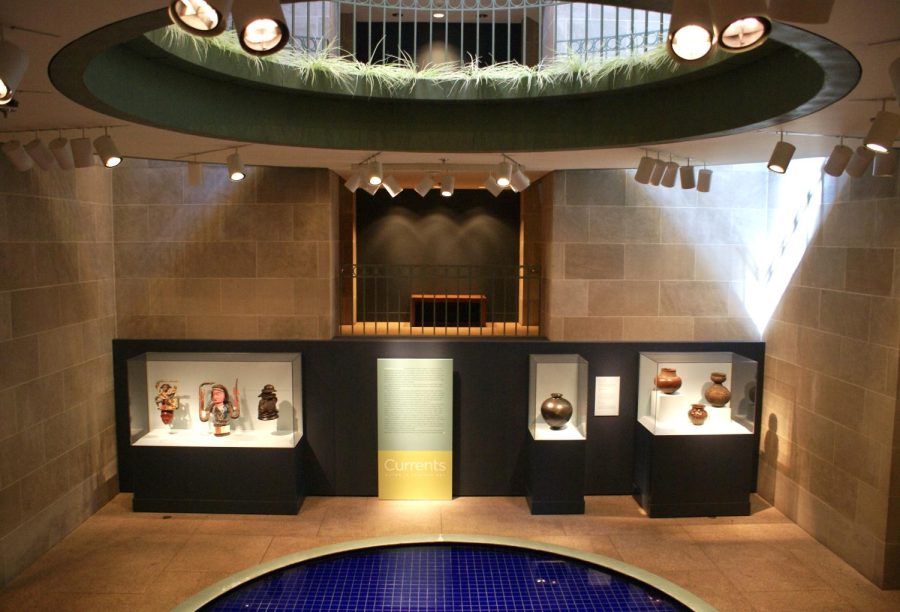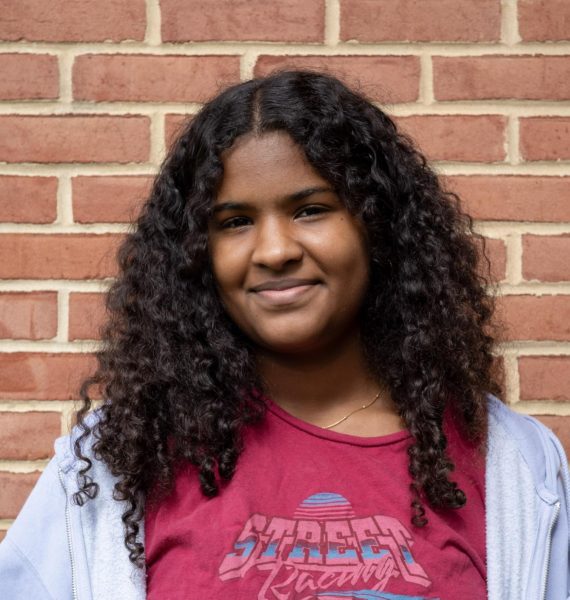Five culturally awakening D.C. museums
May 31, 2023
While passing through the iconic National Mall, beautiful and intricate architecture overlooks each lingering passerby, mesmerizing them with both magnificence and American pride. Straight ahead, the Capitol’s immense stature engulfs the horizon. Facing it stands the renowned Washington Monument, looming majestically over the DC skyline. When visitors stroll casually through the Mall in search of entertainment, the plethora of free art museums nearby immediately comes to mind.
Washington D.C. contains plenty of museums highlighting various genres, from modern art to old relics. Each piece is contributed by individuals from diverse backgrounds, developing enchanting exhibits containing art passed down to younger generations. Government-funded museum organizations like the Smithsonian can open their doors to everyone free of charge. Beyond those, there is a multitude of other galleries that — despite a lack of full government funding — allow visitors to experience their exhibits for free as well. All of these museums widen the historical lens of D.C. visitors.
The National Museum of African Art
The National Museum of African Art is one of the relatively obscure Smithsonian art museums. The museum hosts interactive events that integrate visitors with the African Art on display by allowing them to create art connecting to specific exhibits. Most recently, they held a contest for teens in the DMV, correlating to an exhibit named “Nollywood Portraits” by Iké Udé. The showcase “I Am Beautiful” invited 15 to 19-year-olds to illustrate their exploration of beauty and individuality through authentic videos, drawings or other forms of portraiture.
Upon entering the museum, visitors are immediately met with vibrant signs and mirrors quoting, “I am Beautiful: #NollywoodSmithsonian,” leading to Iké Udé’s “radically beautiful” exhibit. The exhibit highlights current Nigerian actors in the three-billion dollar Nollywood — a combination of Nigeria and Hollywood — industry through portraits and fashion. It explores the global impact of this industry, stretching throughout the entire African continent and into the U.S. The vision behind the photography illustrates the strength of African identity in times of extreme racism, which threaten black lives across the globe.
Further into the museum, the exhibit “Currents: Water in African Art” provides insight into a prominent belief in African culture: that water is one of the most potent forces of the earth. Within the extravagant display are numerous complex sculptures of water spirits coming from Ijo and Guro artists, and tools such as vessels or traps used for fishing and bringing water into villages.
Volunteer Worker Sara Beaumont finds that the museum’s primary focus on the art itself and its relation to African culture makes the experience much more meaningful than broader museums.
“This museum does it in a different way because we don’t stick with just one time period and one country,” Beaumont said. “We put multiple things together, and just kind of see how it melds.”
The National Museum of Asian Art
Located directly beside the National Museum of African Art, the National Museum of Asian Art stands proudly, established in 1923 as the first Smithsonian art museum. It showcases a cultural exchange between Asia, the United States and the Middle East between the nineteenth and early twentieth centuries. The museum includes the Freer Gallery and the Arthur M. Sackler Gallery, which allows visitors to dive further into the depths of Asian Art through 25 exhibits that reveal rare pieces of art in an enchanting display. Once they enter each gallery, guests experience unique, detail-oriented exhibits that display different aspects of Asian culture. Each shares a timeless story through the art portrayed in the collections. These stories can explain issues such as the widespread economic inequalities throughout the whole world or the light of the first snow of the season being enjoyed in 18th-19th century households.
One unique facet of the museum is the implementation of sound as part of the experience. The loud crack of thunderstorms, the melody of Middle Eastern music and the squeaking noise of a monkey in the background make for an elevated visit — visitors don’t just see the art, but they experience it. Floridian visitor Jean Crocket found that the museum’s immersiveness added to its allure.
“[It’s] really different, beautiful and just a whole different aesthetic from what I’m used to,” Crocket said. “It comes in through the ears, through the eyes, through the box that you put your hand inside, it’s interactive.”
Along with the auditory aspect, the museum has another method of engaging visitors: heightened visuals. In an exhibit called “A Splendid Land: Paintings from Royal Udaipur,” the museum provides magnifying glasses to viewers so they can see the complexity of the art, specifically the gold detailing.
Along with the art’s intricacy comes ancient tales and history. “An Emperor Visits Tulsidas” is one of many art pieces in the museum accompanied by a story and explanation for viewers to better understand it. Visitor Jeanne Repetto connected these stories to her in-person experiences from previous visits to Asia. The museum enriched her perspective on Asian culture, providing a perspective only seen through art, she said.
“For me, it’s the overall Asian connection,” Repetto said. “Because I’ve been to China a couple of times and the art and the flavor is so different than what I typically see when I go to Paris or Europe, or here in the United States, it’s nice to see the intricacy of it.”
The National Museum of the American Indian
With locations in both Washington D.C. and New York City, the National Museum of the American Indian displays the rich, overlooked history of Native Americans through artifacts and documents dating back to the 1600s. The museum’s intricate design, initially developed by Native American Architect Douglas Cardinal, creates an inviting and unique atmosphere for visitors. This distinct design compared to the classic American architecture so frequently exhibited in D.C. shows the contrast between Native American culture and American lifestyle.
The museum provides cultural cuisine to visitors through the Mitsitam Cafe, amplifying their experience by introducing them to more aspects of Native American identity. Along with the cafe, a gift shop features jewelry, toys, clothing and other works by Native American artisans, promoting a further appreciation for Native culture and creating an exhibit in and of itself.
The museum currently presents four exhibits. “Why We Serve: Native Americans in the United States Armed Forces” and “Nation to Nation: Treaties between the United States and American Indian Nations” are temporary exhibits that currently display the involvement of Native Americans in United States affairs. Meanwhile, “Americans” as well as “Return to the Native Place: Algonquian Peoples of the Chesapeake” are ongoing and will continue to be open to the public indefinitely. Both exhibits connect the past to the present, using distinct photographs and artifacts to depict the impact of certain events in history on Native American lives.
Out of all four distinct exhibits, “Americans” delves the deepest into the impact Native Americans have had on American identity in the main room. The main room has four openings to different galleries presenting topics from Pocahontas’ story to the Trail of Tears. The collections present timelines that disprove the false and surface-level history given by American historians step by step. History taught in class often skips through the devastation Native Americans experienced when being pushed out of their land. Visitor Kat felt that she had stepped out of the history class “bubble” and walked into the truth.
Hirshhorn Museum
A contemporary museum, the Hirshhorn Museum spotlights the art and artists of the present era. Opened in 1974, the architecture of the museum stands out as opposed to the symmetric or neoclassical designs of most museums located in the National Mall. The circular and simple structure draws visitors in to see the surprises the museum has in store.
The average visitor, however, may not have the opportunity to see each exhibit. Hirshhorn contains an exclusive display reserved only for the most prepared and committed viewers. Only available to those who either reserve a pass online the day before or are part of the Insider Members Club of the museum, the “One with Eternity: Yayoi Kusama” exhibition surrounds visitors with dotted craftwork from head to toe. The artist, Yayoi Kasuma, has experienced hallucinations from a young age. To take control of her hallucinations or what she termed “Self Obliteration,” Kasuma painted what she saw: polka dots.
However, for those who are unable to see her display, there are many other enrapturing exhibits available. The majority of the exhibits also feature short films that help viewers understand the art displayed in the galleries.
For visitor Shana, the modernism of Hirshhorn prompted her to contemplate the future. It opened her mind to reality, as opposed to historical art which tends to make one reminisce.
“The world will keep going, but you will keep getting older,” she said. “Life keeps changing and it’s scary.”
The National Gallery of Art
The National Gallery of Art showcases Western art from the Middle Ages to the present day and is spread throughout two buildings, housing more than 150,000 different methods of art. Certain galleries within the museum pinpoint specific historical artists such as Leonardo Di Vinci and Vincent Van Gogh.
One noteworthy exhibit, located in the west wing of the museum, is the “Masterpieces of American Furniture” collection. Dating back to the 1700s, this collection displays a design of furnishings that were featured in vintage movies. The details in the wood couches and the gold detailing in the intricate windows pop out to viewers in a unique way, different from paintings or sculptures.
Before its residence in the National Gallery of Art, married couple George and Linda Kaufman bought the furniture in auctions and stored the pieces in their home throughout their marriage. The desks were used for work and their family rested on the couches, adding a lived-in quality to the furniture in the exhibit.
John Rooney, who works in visitor experience at the museum, finds that the fact the collection has been enjoyed and lived in adds more beauty to the exhibit.
“What I like about it was that it was actually used, lived with, a part of her existence,” Rooney said. “Now it’s here for safekeeping for perpetuity. It’s beautiful, handcrafted furniture that is in safe hands right now.”
The museum is an American and Western art experience, showcasing skill that has developed the standards of American beauty throughout the years. From collections by black southern artists to the work of contemporary artist Phillip Guston, The National Gallery of Art highlights numerous interconnected American eras, serving its purpose as a center of visual art, education and culture.
Sophomore Vivian Ooi believes that the museum encapsulates different versions of America as a whole, which makes it very impactful, she said.
“When I went to the museum I was super impressed with the artwork I saw,” she said. “One of the things that I really liked was how diverse the art was. That just shows how America has multiple cultures. I saw so many artworks done by immigrants — I think that’s the most important thing about that museum.”










